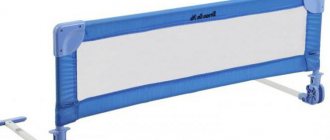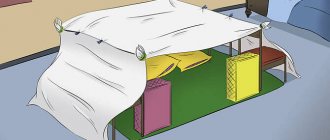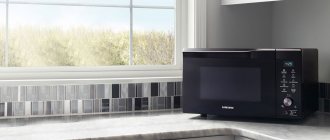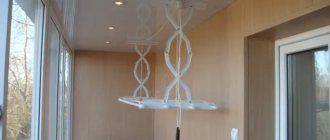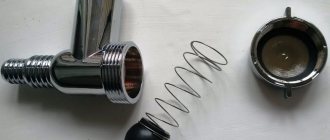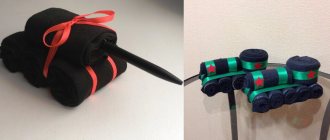Periodic cleaning of the chimney pipe is an important point in the maintenance of heating equipment. It is needed even when using high-quality, expensive firewood and modern stove installations. Small particles of combustion products gradually accumulate on the walls of the smokers and impair the operation of the system. Even a person who does not have special skills and experience in such a matter can clean the chimney.
The main tool to help will be a cleaning brush, which you can make yourself. This tool helps keep the smoke exhaust system clean, and accordingly maintain draft for quick removal of gases, and ensure efficient operation of the furnace device.
Signs, causes and consequences of a clogged pipe
The use of solid fuel for stove heating has many advantages, such as efficiency, autonomy, and heat transfer.
However, if used incorrectly, the efficiency of the heating system can significantly deteriorate. It is recommended to clean chimneys at least once every six months . But first you need to identify the main causes of clogging and try to reduce them to a minimum.
Interesting! When wood burns, gas and smoke are produced. The smoke released may be white or black. The first is a consequence of water vapor evaporating from wood or coal, and black comes from coal and soot. It is the second type of smoke that leads to the settling of the smallest soot particles and contamination of the chimney.
In addition to this natural process, the following can lead to pipe clogging:
- Burning in a firebox various waste containing a large amount of hydrocarbons (plastic, polyethylene, polystyrene foam, rigid paper, cardboard).
- Use of wet and resin-containing firewood or briquettes.
- Incorrect placement of firewood in the firebox.
- Rare cleaning of pipes from ash.
- Malfunction of the heating boiler.
The accumulation of soot and ash inside the outlet pipe leads to the following consequences:
- The passage for smoke narrows, which can cause backdraft when carbon monoxide enters the apartment.
- Large soot particles fly out of the chimney, creating a fire hazard.
We recommend that you read: How to install pipes for heating systems
Using the heating device is strictly prohibited if the exhaust pipe is clogged. Ignoring this advice can lead to dire consequences and pose a threat to life.
You can determine that a chimney requires immediate cleaning by the following signs:
- When preparing the firebox, the wood burns poorly or goes out completely.
- The room fills with smoke.
- There is a noticeable decrease in the thermal effect of the boiler.
- Reduced cravings.
Which tool to use
Clogging of pipes is a consequence of the gradual deposition of combustion products on their walls. After all, smoke is not only a gas. It contains light elements, small particles of ash, etc. They constantly settle on the inner surface of the chimney system pipes, and do their job, albeit slowly but surely.
Eventually, the chimney cavity becomes clogged to such an extent that the draft is significantly weakened. But this is only the first stage. Then layering occurs in certain places of burning.
On a note! Hard plugs are much more difficult to remove, and they cause more problems. As a result, cleaning will require considerable labor.
But the chimney pipes, which look like long sections, still need to be approached somehow. This is done using a chimney brush. The effectiveness of this simple tool has been tested by time.
The ruff, or popularly the brush, consists of:
- metal tubes or cable;
- core or hook for weighting material;
- heads;
- additional nozzles.
To clean pipes, brushes of different sizes and shapes, with nozzles and weights, are used.
In most cases, the presence of tubes or cable is necessary. They enable the performer to control the movement of the instrument. The brush can be lowered to the required depth, break through the blockage by moving the tool progressively, and move on. During the cleaning process, the length of the pipes does not matter. The success of the event depends only on the length of the cable. This accessory can be made of metal wire or spring, but you can also find samples woven from rigid plastic threads.
If there are numerous solid deposits, a more preferable option is to use a metal pipe cleaner made from one or more tubes. After all, it is much easier for a person to operate with a rigid pipe, since the shoulder of the application of force is strengthened and, therefore, the growths are removed more effectively. Deterioration in mobility is the other side of the coin. A device of even a relatively short length takes up more space and is more difficult to transport.
The main working element of a pipe cleaner is a head made of rigid wire. The wire is specially wound in such a way that its parts are directed in different directions. You can also find a version where not wire is used, but plastic elements or something similar. Sometimes in homemade brushes, the heads are often made from pieces of plastic bottles.
A weight must be suspended from the brush, which helps to destroy the hard plug in the pipe
The device nozzle is mounted at a distance of 10-15 centimeters from the edge of the cable, and not directly on the edge. A special hook is attached to the end itself. This accessory is used to hang weights. As a result, the brush for cleaning chimney pipes turns into an analogue of the core, capable of breaking through the blockage formed in the pipe with its weight.
Devices for mechanical chimney cleaning
Contaminants can be removed from the chimney using chemical and mechanical methods.
- The first involves placing chemicals in the firebox and then burning them, which soften the plaque, as a result of which it dissolves and is removed naturally through the pipeline.
- The second, mechanical method, is carried out using scrapers or special brushes.
Practice has shown that the most effective cleaning is with a metal brush, which in appearance resembles a dishwashing tool with a narrow neck.
How to understand when it's time to clean your chimney
Nobody just wants to climb on the roof with a ruff, which in principle is understandable. It is extremely important to be able to determine when it is time to have your chimney serviced. It's quite easy to do, and you don't need any special skills. If heating equipment is used according to all rules, it is recommended to clean the pipes approximately once every two years. When you throw various objects into the firebox, for example, plastic bottles, rubber or damp firewood, it is advisable to carry out maintenance annually. Also, pay special attention to the color of the smoke. When wood burns, it should be almost white. If the color is closer to black, this indicates a large amount of soot. In any case, it is recommended to have a ruff or brush. If you don't want to clean it every year, experts advise using chemical chimney cleaners as a preventative measure.
How to make a chimney brush with your own hands
Cleaning brushes made at home are in no way inferior in functionality and quality to store-bought counterparts. Using the instructions and advice of experienced stove makers, you can create a high-quality cleaning tool with your own hands that will last for more than one season.
The choice of material for the production of the brush depends on the amount and persistence of deposits in the pipe, and on the design of the outlet itself.
For regularly maintained asbestos-cement chimneys, a soft brush is suitable, and for old brick chimneys, where plaque has accumulated over the years, you cannot do without a hard metal wire.
It is better to have as many materials as possible on hand and make several brushes of different hardness or one combined option for all cases of blockage. The main materials for manufacturing are:
- steel rope;
- plastic containers;
- springs;
- thick fishing line or scraps of metal wire;
- metal chain or strong rope;
- various loads.
Before starting to manufacture a brush, it is necessary, based on the length of the chimney, its diameter and the degree of contamination, to consider the material and design of the future tool.
We recommend that you read: Rules for calculating and installing a truss from a profile pipe
Determine the required mass and size of the load, the rigidity of the brush and the length of the cable. To choose the optimal length of rope, you need to add 2-2.5 meters of reserve to the measured depth of the chimney. This will allow you to wrap the cable around your hand or secure it to the pipe for easy cleaning.
As a load, you can use a specially cast product or a heavy car part, heavy nuts, or metal devices.
Making a plastic brush
To make a plastic brush from improvised materials at home, you will need: a cable or rope, several 1.5-2 liter plastic bottles, metal wire with a diameter of 2 mm.
Sequence of work:
- The bottom of the bottles needs to be cut off and cut into strips measuring 4-5 mm vertically to the neck. In this case, you need to cut off the top of one bottle - it will serve as the base of the structure.
- It is necessary to insert all the prepared parts into the base, one into the other, carefully protruding the cut strips to the side.
- You need to secure the strips in several bundles with wire so that the product does not fall apart, and also attach the base to the cable.
- If you have a handle of the appropriate size, you can insert it into the neck of the cut-off bottle that serves as the base. Then the product will resemble a broom.
Making a metal brush
To quickly make a metal brush you will need: a large bolt for the base and a washer for fixing, a roll of metal wire and pliers.
Sequence of work:
- Threads of the same size are cut from a coil of wire, so that the future brush fits into the chimney. For high-quality cleaning, the diameter of the tool must occupy at least 80% of the pipe being cleaned.
- The wire is wound onto the bolt up to half its length and secured with a washer. Pieces of wire can be welded to a bolt if you have the proper skills and equipment. Then the product will be stronger and more durable.
- A cable is attached to the remaining, unused part of the bolt and the brush is ready.
Safety precautions when cleaning the chimney
Chimney cleaning requires strict adherence to safety rules:
- you should not clean from above if the weather is bad outside: rain or snow, slippery roof - all these factors increase the risk of an accident,
- when cleaning from above, if there is good draft in the furnace, soot flies out into the chimney, which means you need to tie yourself down so as not to fall when the flakes fly out,
- use safety glasses, gloves and a respirator.
Features of chimney cleaning
When the tool is ready, you need to close all the bolts and vents of the fireplace or stove. Cleaning must be done from the roof side.
Important! To ensure safe work, it is necessary to securely secure yourself on the roof or use a safety net with limiters.
Next, you need to lower the brush into the pipe and clean the clogged areas. After cleaning is completed, you need to remove any fallen debris from the fireplace or stove.
We recommend that you read: How to properly clean a pipe in a bathhouse from soot and soot with your own hands
If a load attached to a cable is used during cleaning, first lower the cable into the pipe, and then sharply throw the brush.
Thanks to the force of attraction, the impact on blockages becomes more intense, which contributes to the destruction and shedding of soot and soot from the pipe walls. The procedure is repeated until the desired result is achieved.
What you need to know before lowering the tool down the chimney
The chimney should be cleaned not at the end of the heating season, but at the very beginning . This will allow you to have complete confidence that there is no bird's nest, cobwebs, leaves or other debris in the chimney. The best time for this is one of the warm and windless days in early autumn.
When cleaning a chimney, you should take care of the appropriate equipment and insurance.
Before you change into a chimney sweep suit and begin chimney maintenance, you must close all stove dampers and doors. Soot is tiny particles that can seep into any cracks and pollute the room and objects that are in it. If you have to service the chimney of a fireplace with an open firebox, then it is sealed using plastic film and tape.
The process of cleaning a chimney is not difficult. The brush is lowered repeatedly into the smoke channel, knocking deposits off the walls. To enhance the effect, alternate reciprocating movements with twisting the cable in different directions. The soot falls down. You can remove it through the inspection hatch using a dustpan, poker and broom.
There are situations when a device encounters an insurmountable obstacle halfway through its journey. This can be any voluminous object - some kind of rag, a bird's nest, or a piece of brick that has fallen out of the masonry. In this case, the brush is unfastened and the resulting jam is knocked out with just a weight, in the expectation that the cork will fall into the stove. After this, the brush is returned to its place and cleaning activities are resumed.
Regular soot removal will be required even where the latest, high-tech solid fuel equipment is used. The brush, which you can make with your own hands, will cope with even the most stubborn deposits with dignity. It’s just important not to put off cleaning the chimney for too long - not only the thermal efficiency and economics of the stove depend on it, but also the safety of your family.
Tips and tricks for chimney cleaning
Regular, timely removal of plaque and ash is the main factor for easy cleaning and high-quality operation of the heating system. Centuries of experience in operating fireplaces and stoves has led to the development of various methods for removing soot from smoke exhaust pipes. Here are a few of them:
- Potato peel. Half a bucket of potato peelings is poured into the pipe, which, when the boiler is turned on, heats up and releases starch. The properties of this substance help dissolve plaque.
- Aluminum containers. If you add aluminum cans to the firebox, soot will not settle on the walls. This is due to the fact that aluminum atoms have the same charge as soot particles.
- Firewood from aspen. An easy but dangerous way to remove contaminants from a pipe. A log of this tree must be placed in the firebox and the stove should be lit. After a few minutes, a hum will be heard, which means that the settled soot has caught fire and is flying out. The danger of this method is due to the uncontrolled release of hot particles, which, if they fall on the roof or neighboring buildings, can lead to a fire.
- The chemical cleaning method is accompanied by an unpleasant odor, soot and the settling of dust and dirt on all interior items close to the stove. The plaque peels off partially from the chimney, so such cleaning cannot be called completely effective.
Note! The odor emitted during chemical cleaning is harmful to human health, therefore, while using cleaning products, it is better to leave the room where the chimney is located.
Professional means for clearing chimney blockages
These methods help in cases where the chimney is not very clogged. If chemicals allow you to clean a brick chimney less often, then in the case of a ceramic or stainless steel chimney, it can completely solve the problem of removing blockages. The method is especially effective for chimneys with bends that cannot be reached with mechanical devices. The chemical action softens the soot found in the boiler, furnace or smoke ducts.
Soot peeling off occurs up to 7 days after cleaning. Sometimes debris completely clogs the pipe. In this case, you can’t do without a ruff.
It is important to carefully read the list of components of chemicals. Some of them are designed to solve a specific problem in one or another part of the chimney, that is, they will not have a comprehensive effect along the entire length of the pipe.
Table: popular professional products for cleaning chimneys
| Name, release form | How to use | Results, features |
| "Kominchek", granules packaged in paper bags | Place the unpacked granules on firewood in a well-heated oven. | Pristine beauty can only be achieved if the soot layer on the inside of the pipe is no more than 2 mm. |
| Logs “Chimney Sweeper” (various brands), “Smoke”, etc. | Place in a preheated oven. | During the combustion process, the log produces smoke with substances that soften the soot. As a result, the chimney and firebox are cleared of plaque. |
| Powders “Jolly Chimney Sweep”, “Chimney Sweep Express”, etc. |
| The soot falls off. Sometimes the process takes up to two days. |
| PXK (anti-carbon chemical composition), powder | Separately or with firewood. Consumption: 200 g per 1 ton of fuel. | The product is effective as a preventive measure: less soot actually accumulates. Doesn't help much with clearing the clog. |
| Hansa, crystals | Place in a preheated oven. | The crystals decompose the wood into resin and steam, and then the resin into flammable substances that burn directly in the firebox. The product fights old stains of tar deposits on the pipe. During the start of the heating season it is used daily, then as needed. |
Video: three ways to clean a chimney
Wire brush for cleaning
Another option is to make a cleaning brush from a disc brush from an angle grinder. This is a more effective way of cleaning, since the grinder’s brush is much stronger and will surely cope with even the most stubborn soot. Of course, first you should make sure that the diameter of the brush matches the diameter of the chimney, since such a brush is very stiff and the bristles do not bend well. To use a brush from an angle grinder, attach a 5 kg weight to the brush axis, and a steel cable to the other side of the axis, through which you will pull the brush in the chimney. An additional cable should be attached to the weight; if the weight is not enough to pull the brush through the pipe, you can pull the cable attached below and help the process. When making a homemade brush, make sure that you use a weight one third smaller in diameter than the chimney and of a shape that will not catch on the bends of the chimney, otherwise you will have to dismantle the stove masonry to remove the tightly stuck sinker.
Making a chimney brush yourself
Making a chimney brush
A budget brush for cleaning a chimney can be easily made with your own hands. To make it, follow the instructions below:
- Go to the market and buy a synthetic round broom, a metal cable the same length as the chimney, two clamps, a pin (8 mm thread) and a few washers.
- Unfold the bristles on a synthetic round broom so that they resemble a bouquet. Keep in mind that the villi may not immediately respond to your efforts. To soften the lint, you can place it in boiling water for a few minutes.
- The straightened brush is put aside with your own hands. We take the ear and screw a hairpin onto it from both ends. Next you will need a brush for cleaning the chimney and a washer that is attached to the bottom of the brush.
- If the diameter of the brush does not suit you, you can tighten the washer more. The more it curls, the more the villi straighten to the sides. Once you have decided that the brush has the desired diameter, proceed to the next step.
- Press down on the base from above and slowly screw on the second fastener.
- The brush turns over. At the bottom you will see the mounting ear. You need to tighten it exactly as much as you want to increase or decrease the diameter of the brush.
- Look for a staple or make your own using steel wire. It is necessary to secure the cable to the brush. Before installing the cable, you need to measure the length of the chimney. After this, a part of the required length is cut off from the metal cable and attached to the workpiece. Remember that the brush also has its own length, so do not forget to take this factor into account when making brushes with your own hands.
- All that remains is to attach a metal weight to the device (2 kg will be enough).
Brush for cleaning chimneys
How does a chimney sweep's main tool work?
A typical stove brush consists of the following structural elements:
- flexible cable - a spring with a minimum gap between turns;
- a spherical or cylindrical brush – a brush – with “working elements” protruding 360°;
- suspension - a removable weight at the end of the cable located behind the brush.
When working in a horizontal plane, the suspension is dismantled - in this case we need the flexibility of the spring cable. Cleaning a vertical channel with your own hands involves working with a rigid structure. Therefore, in this case, a suspension is fixed at the end of the cable, which neutralizes the flexibility of the spring due to the influence of gravity.
In addition, with a professional tool, the brush is removed by twisting it from the cable, because the diameters of chimneys can be different.
Prevention
Some preventive measures have already been described. But there are also preventive procedures that will reduce the accumulation of soot in the chimney.
Pipe installation
The rate of clogging and the degree of contamination depend on the design of the chimney. Therefore, when choosing it, it is important to take into account several features:
- When choosing between a round or square chimney design, give preference to the first, since the corners of a square chimney create additional opportunities for the accumulation of soot, which is very difficult to clean out.
- To ensure maximum traction, follow the rules for installing pipes in height.
- Do not make a structure of several bends - elbows. It is more convenient to have a chimney from one pipe, the direction of which can be changed if absolutely necessary.
- To eliminate a large number of irregularities, and therefore minimize the deposition of combustion waste on the surface, the chimney must be well scraped, that is, leveled.
Fuel selection
Proper kindling affects the rate at which plaque appears:
- Firewood for kindling must be dry. To do this, it makes sense to build a firewood shed that would house a supply of fuel for 2–3 years. In this case, for kindling you should take those that are drier, and leave fresh supplies to reach the desired state.
- Resinous tree species (pine, spruce) for firewood are prohibited. They provoke abundant accumulation of soot and tar. It is better to use birch ones; besides, they are easy to light.
- Anthracite coal, nut fractions or metallurgical coke, in which all toxic substances burn out from anthracite during processing, are suitable for kindling. The flammable type and briquetted coal burn out quickly, but emit a lot of soot.
- You cannot burn garbage in stoves and fireplaces.
- You cannot heat the stove with scraps of plywood, chipboard, OSB, etc. To make them, they use materials that, during the combustion process, leave sediment on the walls of the chimney that is difficult to remove.
Can't do without a brush
To maintain the working condition of the chimney, it must be cleaned twice a year. Even if the stove is not used for some time, the chimney must be cleaned. Birds like to build nests in unused chimneys, and spiders like to spin webs. And if all this starts to burn, the smell will be very unpleasant, besides, the caustic soot and fumes will immediately cling to the walls of the chimney, thereby sealing it for a long time and causing a blockage. And if there is a lot of such debris, smoke will begin to accumulate in the pipe, which can lead to:
- chimney explosion
- a fire inside the chimney that will spread into the room.
